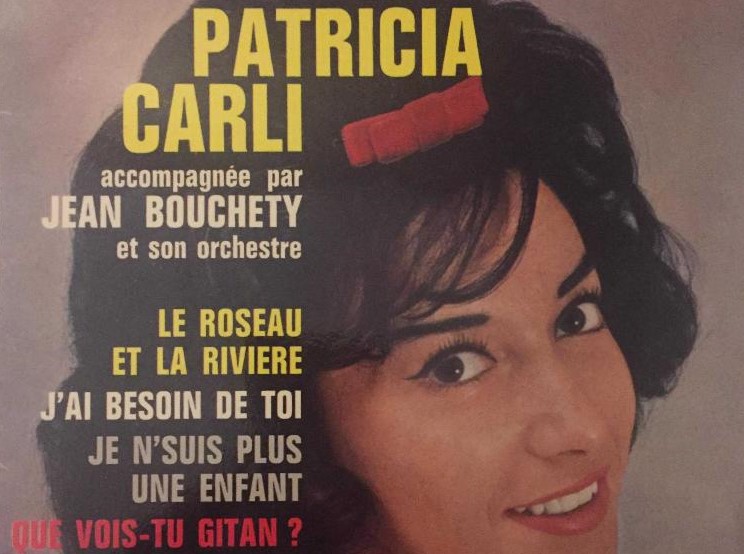Ye Ye girl: Who is Patricia Carli?
One of the adaptations performed by Carli was Non Ho L'Età, which brought first place to sixteen-year-old Gigliola Cinquetti in the 1964 Eurovision Song Contest. Song; It was also adapted into Spanish, Japanese, English, and German, and was interpreted by Patirica Carli in 1966 under the title Je suis à toi.

Rosetta Ardito, better known by her stage name Patricia Carli, is a French pop singer, composer, and songwriter of Italian origin. While Patricia Carli was living in Belgium, she attracted the attention of French music circles and was invited to this country.
Born in Taranto in the south of Italy in 1938, the family of Rosetta Ardito, better known by her stage name Patricia Carli, emigrated to Belgium right after the Second World War. Carli, who rose to fame with the song Demain tu te maries she sang in the sixties, has produced many important works as both a performer, composer, and songwriter since then.
Rosetta Ardito (born 12 March 1938), known by her stage name Patricia Carli, is an Italian and Belgian origin French singer, songwriter, lyricist and composer. In partnership with Gigliola Cinquetti she won the 1964 edition of the Sanremo Music Festival, with the song "Non ho l'età".
Patricia Carli, who became famous in Europe in the 60s, was born in Italy in 1938. Its real name was “Rosetta Ardito”. After spending her early youth in Taranto, where she was born, she migrated from this port city at the heels of her boots and settled in Belgium.
Yé-yé was a style of pop music that emerged in Western-Southern Europe in the early 1960s. The French term yé-yé was derived from the English "yeah! yeah!", popularized by British beat music bands such as the Beatles. The style expanded worldwide as the result of the success of figures such as French singer-songwriters Sylvie Vartan, Serge Gainsbourg and Françoise Hardy. Yé-yé was a particular form of counterculture that derived most of its inspiration from British and American rock and roll. Additional stylistic elements of yé-yé song composition include baroque, exotica, pop, jazz and the French chanson.
Real Name: Rosetta Ardito
Birthplace: Taranto, Italy
Date of Birth: March 12, 1942
About:
- The artist, who is one of the leading representatives of Yé-Yé style music, gave concerts in Turkey in the 1960s and recorded Turkish records of her songs, for which Sezen Cumhur Önal wrote the lyrics.
- Gigliola Cinquetti sang the song "Non Ho L'Età", which she composed, on behalf of Italy in the 9th Eurovision Song Contest and came first.
- She sang the song "Samanyolu", which was sung by Berkant and identified with him, under the name "Oh Lady Mary" and the record sold over 100,000 copies, becoming the first platinum record in Turkey.
-She wrote lyrics for many artists such as Nicoletta, Dalida, Claude François and Annabel Buffet.
First Album: Tendres Années 60
First Single: Je Suis Á Toi
Born on March 12, 1942, in Toronto, Italy, Patricia Carli was living in Belgium and attracted the attention of French music circles and was invited to this country. She settled in France in 1963, signed a long-term contract with the Bel-Air record company, and her second EP (Extended Play) 45 record 'Demain Tu Te Maries' became a hit. (You're getting married tomorrow) The composition of this song dated 1963 belonged to Carli. Another name for the song was "Arrête, arrête, ne me touche pas" (Stop, stop, don't touch me). The black and white clips of the song, which remained on the charts for a long time (there were no color TV broadcasts in Europe yet), were constantly shown on television (today, these clips can be accessed on the internet).
She continued her success with 'Les Mal-aimés', which she made in 1963.
Gigliola Cinquetti sang the song "Non Ho L'Età (per amarti)" ("I'm not old enough, I'm not old enough"), which she composed, on behalf of Italy, at the 9th Eurovision Song Contest held in Copenhagen, the capital of Denmark, in 1964. The piece won the competition. In the same year, Patricia Carli and Gigliola Cinquetti performed the same song together at the San Remo Music Festival and won the grand prize of this festival. (Another name for the piece was "Je suis à toi").
From the beginning, Patricia Carli also wrote the lyrics for most of her own songs. After a while, she stopped singing and continued writing lyrics for singers such as Nicoletta, Dalida, Claude François, and Annabel Buffet. She tried to make a comeback in 1978 with the song 'L'Homme De La Plage'.
